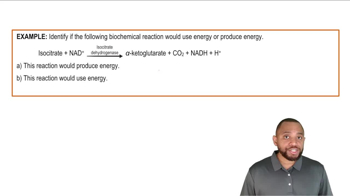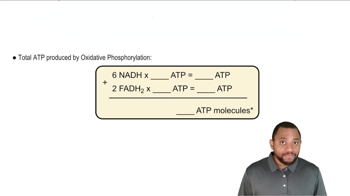Textbook Question
Oxidative phosphorylation has three reaction products.
a. What is the energy-carrying product?
1085
views
 Verified step by step guidance
Verified step by step guidance Verified video answer for a similar problem:
Verified video answer for a similar problem:



 2:37m
2:37mMaster Oxidative Phosphorylation Concept 1 with a bite sized video explanation from Jules
Start learning